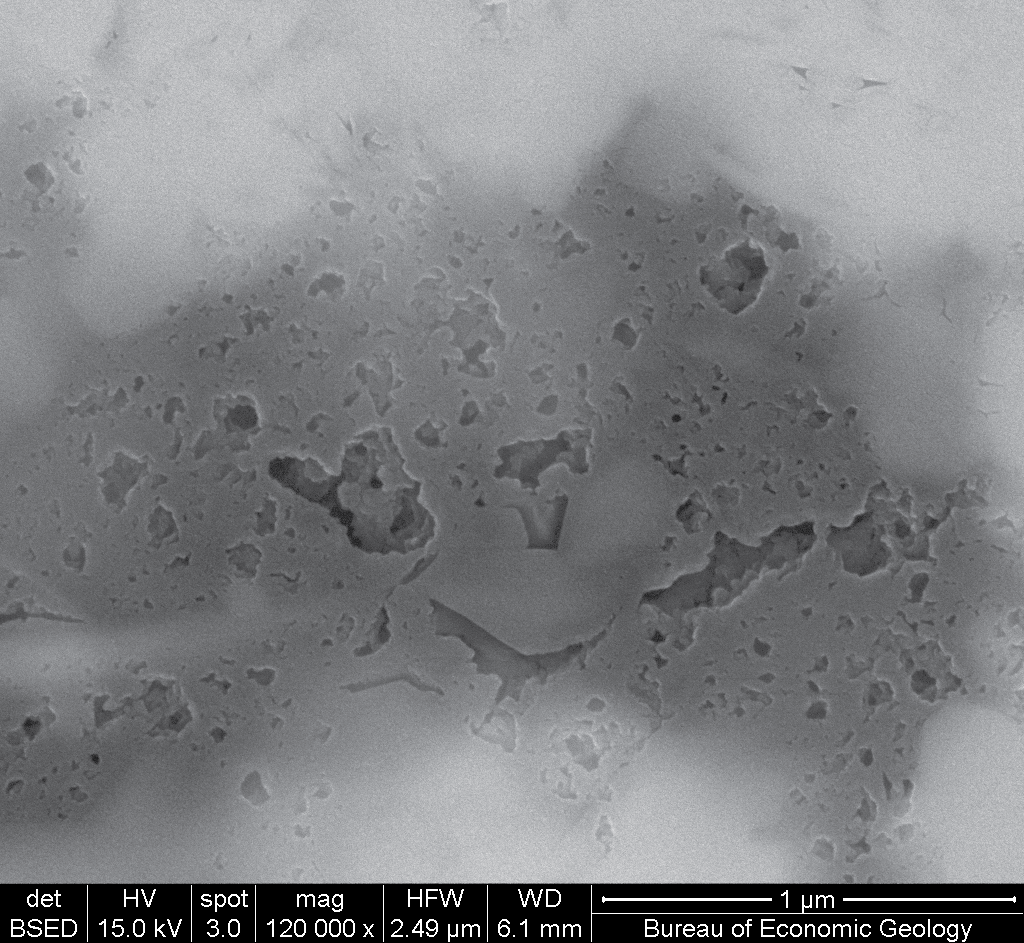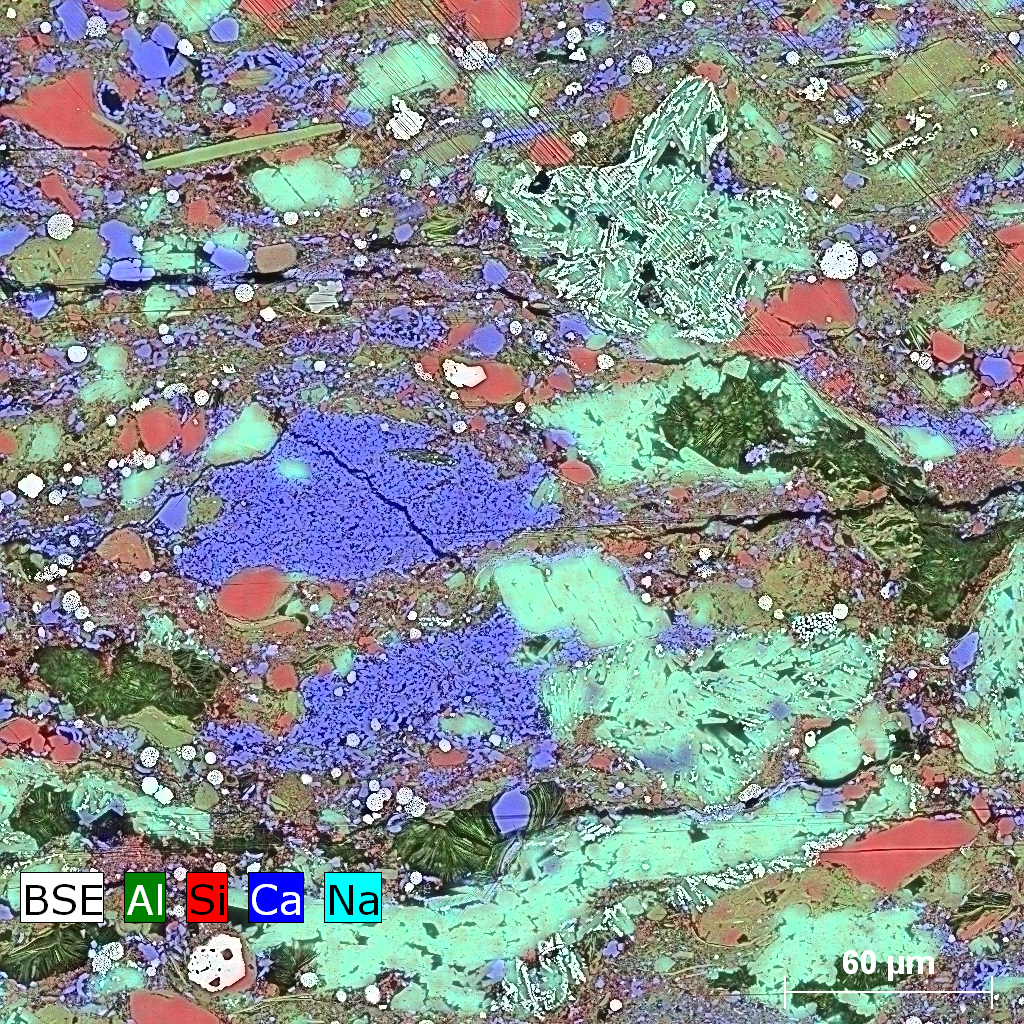March 22, 2021

Robert Reed
Scanning Electron Microscopy of the Vaca Muerta Formation

High-magnification backscattered electron SEM image of numerous pores in organic matter.

Energy dispersive element maps superimposed on a backscattered electron image. Red is quartz, blue is mostly calcite, aqua are albite feldspars, greens are clay minerals and micas, light gray are pyrites, and black is organic matter. Sample contains a mix of altered feldspars, coccolith-rich pellets, and a pyritized volcanic grain.
The Mudrock Systems Research Laboratory is working on an integrated study of a shale core from the Jurassic–Cretaceous Vaca Muerta Formation of the Neuquén Basin, Argentina. Bureau researcher Robert Reed is conducting scanning electron microscopy (SEM) studies of the core, with a focus on pore systems, lithologies, and diagenetic processes. This is not Reed’s first experience with the Vaca Muerta Formation. A previous collaboration with Bureau researcher Kitty Milliken was funded by Chevron and lead to a 2019 publication in Sedimentary Geology.
Vaca Muerta is Spanish for “dead cow,” but the name belies the economic potential and research challenges of this heterogeneous unit. The thickness of the shale (up to 400 meters in places) and variable lithologies make it a challenge to work on. “The lithology is quite complicated,” notes Reed, “It’s a bit like taking a calcareous shale like the Eagle Ford Group and mixing it with a siliceous shale like the Barnett while in proximity to an active volcano. The pore systems are complex, and the thickness of the unit means that there is some variation in thermal maturity from the top to the bottom.”
The unit is also heterogeneous on a microscale, with different grain combinations and fabrics even within an SEM sample. High-resolution SEM images are combined with energy dispersive spectroscopy element maps (see below) to tease out the exact diagenetic history of the rocks. The unit shows a combination of interparticle pores, intraparticle pores, and several types of organic matter pores, with the pore system varying with lithology. Including the SEM work, the final integrated MSRL study promises to jolt some life into the Vaca Muerta.
The core was loaned to the Bureau by industrial associates group member Tecpetrol.